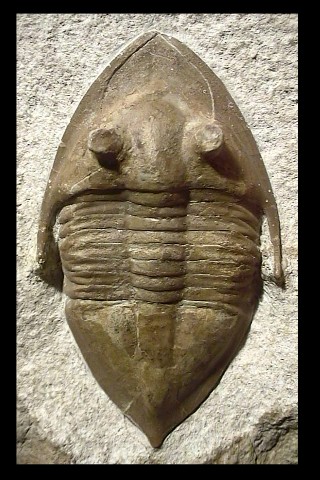
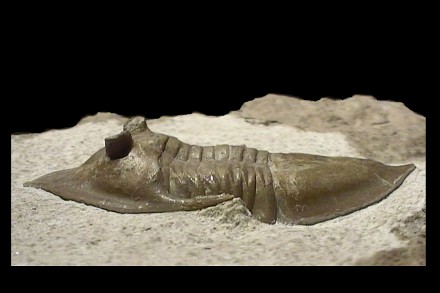
Description of the specimen :
-
95 % complete specimen.
- prone on matrix.
-
Taille totale : 57 mm
- Middle Ordovician.
- Wolchow level.
- Wolchow River, St Petersburg.
- Russia.
Megistaspis triangularis
Megistaspis (= Megalaspis) includes over 20 species in Europe, Asia and North America. They are average to large (sometimes gigantic) trilobites (Max length of the body of some species is up to 400 mm). This specimen has been collected et prepared by and at the Paleolab of St Petersburg .
Here is a Megistaspis triangularis SCHMIDT (?). This species is average to large in size (up to 15 mm) and has been found in NW Russia (Neighbourhood of St Petersburg), from the Lower Ordovician, Arenigian, to the upper part of the Wolchowian horizon.
|
|
|
|
lateral View of the specimen.
|
|
|
Description of the specimen :
|
|
|
Vue dorsale du spécimen.
|
Diagnosis :
|
Order
|
Asaphida
|
SALTER 1864
|
Order including 1/5 of all the species of Trilobites,
it mostly regroup librostoms of various morphology, in which the most advanced
families do present a ventral median suture early visible in the ontogeny
( "asaphoïd" protaspid larvæ).
Occurrence : Middle-Upper Cambrian boundary to upper Ordovician-lower Silurian.
|
|
Superfamily |
Asaphoidea |
BURMEISTER 1843 |
Occurrence: Middle Cambrian to Ordovician.
|
|
Family
|
Asaphidæ |
BURMEISTER 1843 |
Family tends toward loss of apparent segmentation of cephalon and pygidium, obsolescence of axial furrows and deep notching of posterior margin of hypostoma.
|
|
Subfamily |
Asaphinæ |
BURMEISTER 1843 |
|
|
Genus |
Megistaspis (= Megalaspis) |
JAANUSSON 1956 |
The genus include over 20 species. Occurrence : Low and Middle ( ?) Ordovician of Europe, Asia and North America ( ?). Average and large (sometimes very large) trilobites (Max length of the body of some species is up to 400 mm). The cephalon and pygidium are often triangular and very oblong. Both shield are practically of equal size.
|
|
Species |
triangularis |
SCHMIDT (?) |
Average and large sized trilobites (Max length of the body is up to 150 mm). Body fusiform and oblong. Lower Ordovician, Arenigian, to the upper part of the Wolchowian horizon, Russia (Neighbourhood of St Petersburg).
|
Discussion :
Megalaspis ANGELIN 1851 is now considered as a synonym of Megistaspis JAANUSSON 1956 .
Complementary pictures :
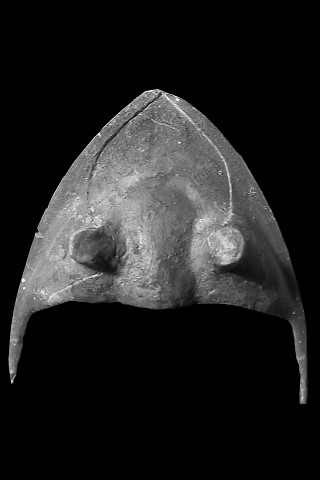 |
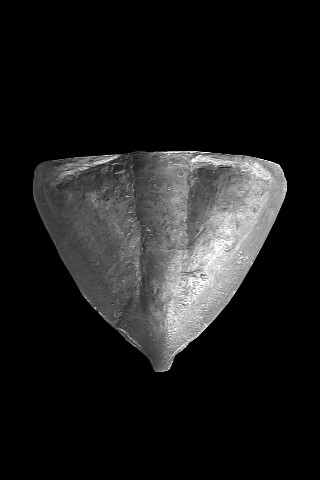 |
|
|
Dorsal view of the cephalon.
|
Dorsal view of the pygidium.
|
As it can been seen, the pygidium doesn't have any sign of segmentation on the pleural parts, but its preservation was poor.
 |
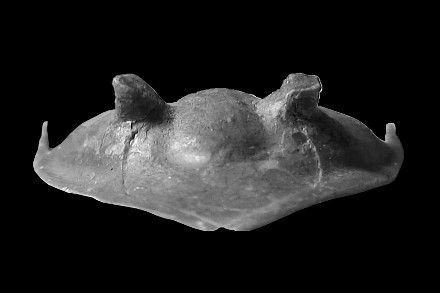 |
|
|
lateral view of the cephalon.
|
frontal view of the cephalon.
|